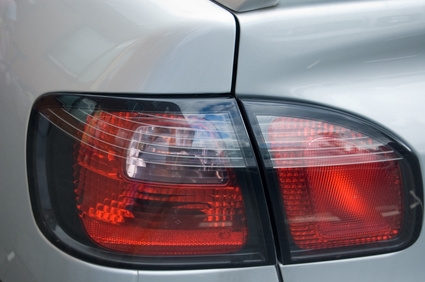
Preparation of an auto body before painting is critical to a good paint job. It's been said that 90 percent of the work involved in a good paint job is the prep work and only 10 percent of the time is spent actually painting the car. To save money, many people perform the preliminary body and prep work themselves before turning the car over to a professional painter. Learn the basic steps involved in prep work so you can end up with that "perfect" paint job.
Wash the car and remove all exterior trim and emblems. Ideally, door handles and antennas should be removed as well. Any exterior parts not removed will have to be worked around and taped over during painting. Removal of all items will ensure a better paint job, but is not a critical requirement.
Survey the body carefully and perform any rust removal, patching, pulling out of dents or other bodywork that may be needed, such as filling in scratches with filler. You want the body to be smooth and flat.
Sand down the car. There are a few thought processes at play here, depending on what your goal is and how extensive your bodywork was. You may just use a scuff pad to scuff up the existing good paint and clear coat that was not disturbed by bodywork. You may also sand down below the good paint to the original primer, or you may even decide to get all the way down to the bare metal using paint removers and extensive sanding. The bottom line is that you want the finish to be in a position to accept a high-build primer applied over a smooth surface. If a car already has a number of coats of paint on it, you probably want to sand down below the paint to the primer. If this is the first paint job, scuffing will only usually suffice. If you are creating a show car and really want to start from scratch, go to bare metal.
Spray two to three coats of high-build primer over the entire vehicle after you are satisfied with your sanding, scuffing or removal of paint. Always wear a respirator or paper face mask when spraying the primer, and work in a ventilated area.
"Block sand" the entire car once the car is in a high-build primer and it is completely dry. This will unveil any low spots or dings and scratches that may have been missed during your bodywork. Block sanding the car is an important part of the process, and entails using a different color of primer sprayed over the original coat. Doing so will reveal any low spots in the finish as you sand off the second coat. The differently colored primer is called a "guide coat."
Wipe the car down with a cleaning solvent or wax and grease remover, then apply a finishing primer. It is critical that the car be wax--silicone--and oil-free at this point.
Lightly wet or dry-sand the new primer with 600- to 800-grit sandpaper, always using a sanding block and never with your bare hands. This will give you a nice, smooth surface for a primer sealer. Wipe down the car once more with a solvent or grease remover.
Apply a couple of coats of a "primer sealer." The sealer will give your new paint a smooth surface to lie on and will help to seal in your primers, glazing compounds and fillers that may have been applied during the process. The primer sealer does not require any sanding, and care should be taken that the sealer remains perfectly clean. It is best to put the primer sealer on the car just before painting. You are now ready for new paint.